When it comes to growing a marijuana plant, there are a variety of factors that come into play. At first you need to decide where you will be growing your plants, then you need to buy the setup, including grow lights, grow tents, a ventilation kit, etc. However, one of the most important aspects that many growers tend to overlook in the initial phases of growth is that of nutrients. Nutrients are important for the growth of the plants as they allow the growers to give their plants that extra ‘edge’ that they need while growing indoors.
If you are reading this article, there’s a good chance that you wanted to know more about powder nutrients for growing plants (or more specifically for growing marijuana). Over the course of this article, we shall try and answer some questions such as what are nutrients, why are they important – and more specifically, what are powder nutrients. We then take a look at how exactly are powder nutrients different when compared to regular liquid nutrients.
Following that, we proceed to look at some more nutrient-related topics before arriving at a conclusion. Let us begin by answering the basics first:
What are Nutrients?
Growers need to know that ‘the perfect soil’ contains all the elements that a plant needs for its growth. While sunlight, air and water are the three basic needs, there are a number of chemicals and compounds that are also needed by the plants for a better growth. In nature, under optimum conditions, they exist in the soil. However, even out there – not all of the required elements exist together. Hence, when you grow indoors, it presents you with a unique opportunity of actually being able to decide which nutrients you want to provide your plant and add them to the soil!
Mixing the right nutrients in the soil also give you control over the growth, the chemical composition and the taste of the marijuana plant. Since the ‘high’ that you get out of weed is one of the primary reasons why this plant is grown, using the right nutrients in the soil can lead to you getting a better ‘high’ because the plant will produce higher levels of THC. Similarly, some users also enjoy the ‘taste’ of weed and want to make sure that they are growing just the right kind of bud by mixing the right kind of nutrients. This is something that connoisseurs of marijuana are quite particular about. For some people, it is the ‘high’, for some people, it is the taste and then there are others who want both to be exactly the way they like it.
Apart from the taste and effect it has on you, there’s another reason that plants need nutrients – for survival. Plants need the bare essential nutrients to survive. Lack of nutrients might mean that some plants might not be able to develop roots, branches, leaves or flowers properly. It can also result in some plants going ‘barren’ and they won’t be able to reproduce. These nutrients include 16 types of essential nutrients as well as some supplements.
These essential nutrients can further be subdivided into three categories based on their importance:
- Primary Nutrients: Oxygen, Carbon, Hydrogen, Nitrogen, Potassium and Phosphorus are the most important nutrients without which the plant just can’t survive. These are also commonly referred to as ‘macronutrients’.
- Secondary Nutrients: These are a set of nutrients which are needed in slightly lesser quantities than the macronutrients. These are Calcium, Sulfur and Magnesium.
- Tertiary Nutrients: These are the ‘micronutrients’ which are third in order compared to the first two. These are required in much lesser amounts. These nutrients are Boron, Chlorine, Manganese, Iron, Copper, Zinc and Molybdenum.
What are Powder Nutrients?
When we say plant nutrients, what most people actually think of is the liquid nutrients which are water-soluble. These nutrients are mixed with water and provided to the soil following which the roots absorb them while seeking water. However, chances are that if you are reading this article you are here specifically for the powder nutrients.
Powder nutrients are also water-soluble nutrients, but they do not come in a liquid state. They come in the form of a powder which can then be mixed into water and you can make your own nutrient solutions using them. These are a great option for growers who find that their plants are lacking certain specific nutrients and that they need to add them to the overall mix. Growers need to be careful while working with powder nutrients because the powder can be quite concentrated – so much so that using even 0.1 gram of these nutrients can impact the plant quite a bit!
While there are single-chemical powder nutrients, there are also options for growers who want pre-mixed powder nutrients. They come in powder forms or in the form of a compressed tablet which is then made to dissolve into water. These are great for growers who don’t want a single specific element but want to provide all the nutrients in one mix. Let us now look at what are the major differences between powder nutrients vs liquid nutrients and which is a better option for you:
Powder Nutrients vs Liquid Nutrients
- Ease of Use: Growers who have used nutrients in the past know that liquid nutrients would often come to you in part ‘A’ and part ‘B’ capsules separately so that they don’t end up mixing with each other. However, when it comes to powder nutrients, there’s no such need for packaging them like that because when they’re in powder form, different nutrients won’t react with each other unless water is added to them. Hence, there’s no need for a part A and part B here.
- Storage: Storing powder nutrients tends to be a rather easy job when compared to storing liquid fertilizers. This is simply because of the fact that powder nutrients can be stored easily without the risk of spillage which is usually associated with liquids. Furthermore, powders are much lighter when compared to liquid nutrients and moving them around isn’t much of a problem either. These factors make storage easier not only for the growers, but also for the shipping companies because they don’t have to be as careful while shipping powder nutrients because there’s no risk of breakage or spillage there.
- Dissolvability: While both, powder nutrients as well as liquid nutrients are water-soluble, it is the liquid nutrients which tend to dissolve faster and in a better manner because liquids dissolve better in liquids. Powder nutrients, on the other hand, take a little longer to dissolve in water and need to be mixed well for it to function effectively. Most growers who use powder nutrients tend to dissolve it in small portions and stir it up real well so that the mixing happens properly. On the other hand, there are some solid particles in liquid nutrients too and we recommend that users shake it up real nice before use to ensure its all mixed properly.
- Cost-Effectiveness: Powder nutrients are also quite cost-effective because a tiny bit of powder, when mixed with water, can provide quite a big result when compared to liquid nutrients. Basically, here you get more value-for-money as opposed to liquid nutrients.
- Ease of Use: If you are a first-time grower, we would recommend you to go with a liquid nutrient instead of choosing a powder nutrient. This is because liquid nutrients are simpler to use and you don’t need to know exactly how much you have to mix/etc because it comes in standard quantities which are easy to manage. Furthermore, premixed liquid nutrients are perfect for newbies. However, powder nutrients are a great option for advanced growers as they can get multiple single-nutrient powders and have them mixed as per their plant’s needs.
Frequently Asked Questions About Powder Nutrients
Now that you know what nutrients are, what kind of nutrients are needed by plants, what powder nutrients are and how they are different from liquid nutrients, here are some frequently asked questions about powder nutrients (and nutrients in general) that we have attempted to answer.
1. Why do plants need nutrients?
Nutrients are critical for the growth of plants because apart from the basic elements of nature they also need various macro and micronutrients which help promote their growth as well as provide them with all the compounds that are needed for them for various processes of growth and reproduction. Plants need nutrients to grow and the lack or excess of them can hamper their growth in quite a visible manner (more on that later).
2. Are there any disadvantages of powder nutrients?
No, as such using powder nutrients and using liquid nutrients has pretty much the same effect on plants. However, the one thing that needs to be taken care of is the experience level of the growers. Growers who are just beginning their growing journey might find it a little hard to estimate exactly how much quantity of powder nutrients they would need to mix and provide to their plants. In case of liquid nutrients, this is simpler and easier. Also, if growers are not using a premixed powder nutrient, they would need to get individual powder nutrients, mix them in proportion and then put them in water making it even more complex for those who are just starting out. However, fundamentally speaking, there are no differences between liquid nutrients and powder nutrients.
3. What happens to plants which don’t get enough nutrients?
Visible effects can be seen on plants that do not get enough nutrients. Their growth starts getting stunted – i.e. the stem starts getting weaker, the leaves start drooping, flowering doesn’t happen on time or if it happens, the flowers don’t bloom out that well. Undernourished plants also find it hard to reproduce and their taste/smell are also not that strong. Hence, plants need a proper supply of nutrients for their proper growth.
4. What happens to plants that get excess nutrients?
While getting a lesser number of nutrients is bad for the health of a plant, getting more nutrients than they require is also bad for their growth. This is because getting excess nutrients would result in a ‘burnout’ because processing these nutrients takes time and energy for the plants and adding a lot of nutrients would cause excess stress on plants, leading to effects such as leaves being discoloured or getting dark spots on them. The tips of the leaves will begin to curl and turn dark, and the flowers, too, won’t bloom properly. Furthermore, there will be a strong smell indicating that there are nutrients in excess.
5. Are there any other ways of providing nutrients to the plants without using liquid or powder nutrients?
One such way is using super-soils. Super soils are basically a mix of soil which comes with all the nutrients and other essential requirements packed in it and all a grower needs is to add water to it and mix it around a little. Post that, only a little water needs to be provided every now and then. However, most people still prefer using nutrients in the regular old-fashioned way than using super-soils. Powder nutrients and liquid nutrients are still the top choices for most growers.
Conclusion
We hope that this article on powder nutrients has helped you gain a better idea about what these nutrients exactly are and how they are different from the traditional type of nutrients, the liquid nutrients. We have also tried to give a detailed insight about why the plants need nutrients and what are the benefits of using them for growing marijuana. In this article, you shall also find a list of all the essential nutrients that a plant requires to grow. Do let us know over mail or in the comments below if there are any more aspects of powder nutrients, or simply plant nutrients that you want to know about and we shall get back to you!
Happy Growing! 🙂
Table of Contents



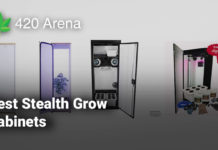




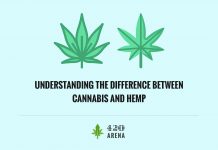
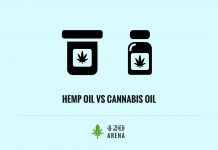
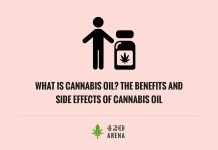

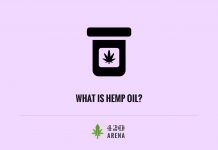



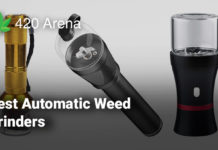
![How to Use Carbon Filters in Your Grow Room [7 Best Carbon Filters for Grow Rooms in 2021] How to Use Carbon Filters in Your Grow Room](https://420arena.com/wp-content/uploads/2020/12/How-to-Use-Carbon-Filters-in-Your-Grow-Room-218x150.jpg)





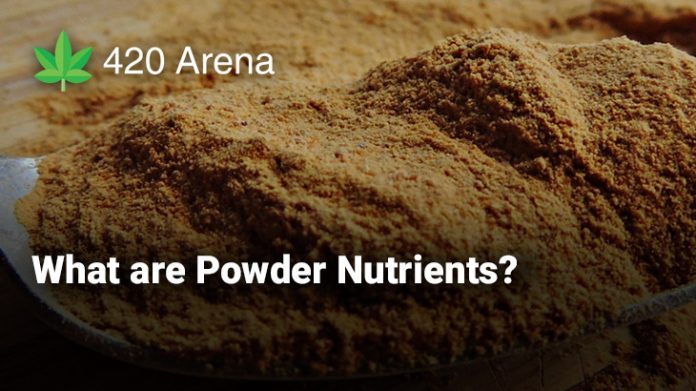

![How to Make a DIY Bubble Cloner [Complete Guide] How to Make a DIY Bubble Cloner](https://420arena.com/wp-content/uploads/2021/02/How-to-Make-a-DIY-Bubble-Cloner-218x150.jpg)





